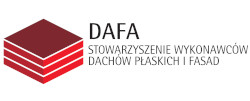Open Access (Artykuł w pliku PDF)
The use of laser scanning for the inventory of historic buildings
mgr inż. Marlena Anna Jurczak, Uniwersytet Warmińsko-Mazurski w Olsztynie; Wydział Geoinżynierii
ORCID: 0000-0003-2619-2699
Adres do korespondencji: Ten adres pocztowy jest chroniony przed spamowaniem. Aby go zobaczyć, konieczne jest włączenie w przeglądarce obsługi JavaScript.
DOI: 10.15199/33.2022.05.06
Studium przypadku
Streszczenie. W artykule przedstawiono informacje dotyczące technologii BIM (Building Information Modelling), korzyści z jej zastosowania w budownictwie, a przede wszystkim skupiono się na przeprowadzaniu inwentaryzacji obiektów zabytkowych – wykonano prace wstępne wg technologii HBIM (Heritage BIM). Pokazano możliwości wykorzystania chmur punktów, otrzymanych ze skanowania laserowego 3D oraz sam proces ich obróbki. Głównym celem było zaprezentowanie kolejnych etapów opracowania danych ze skaningu i efektu końcowego, jakim był model geometryczny obiektu, na przykładzie zabytkowego dworca w Rokicinach. Na podstawie otrzymanych wyników stwierdzono, że dzięki zastosowanej technice można wykonać prace w krótszym czasie niż za pomocą metod tradycyjnych, a dodatkowo w miejscach trudno dostępnych, z wymaganą dokładnością.
Słowa kluczowe: technologia BIM; skaning laserowy 3D; chmura punktów; historyczny obiekt budowlany.
Abstract. The article presents information on BIM technology (Building Information Modelling), its benefits of use in construction, and in particular focuses on conducting an inventory of historic objects – preliminary work was carried out for HBIMtechnology (Heritage BIM).The possibilities of using point clouds obtained from 3D laser scanning and the process of their processing were shown.The main goal was to present the next stages of processing data from scanning and the final effect, which was the geometric model, on the example of the historic station in Rokiciny. Based on the obtained results, it was found that thanks to the used technique, it is possible to perform work in a shorter time than using traditionalmethods, and additionally in hard-to-reach places, with the required accuracy.
Keywords: BIM technology; 3D laser scanning; point cloud; historical building object.
Literatura
[1] Argasiński K. HBIM w praktyce. Materiały Budowlane. 2021; 2: 49 – 50.
[2] NIBS Frequently Asked Questions about the National Bim Standard-United States National Institute of Building Sciences, 2016.
[3] Pawłowicz JA. Digital Survey of Damages on the Façade of a Historical Building. Acta ScientiarumPolonorumArchitectura. 2021; 20: 41– 50, https://doi.org/10.22630/aspa.2021.20.2.13.
[4] Tomana A. BIM: innowacyjna technologia w budownictwie: podstawy, standardy, narzędzia. PWB Media Zdziebłowski, Kraków; 2016.
[5] Włochyński L. HBIM – inwentaryzacja. Materiały Budowlane. 2020; 11: 60 – 62.
[6] Bruno S, Fino MD, Fatiguso F. Historic Building Information Modelling: performance assessment for diagnosis-aided information modelling and management. Autom. Constr. 2018; 86: 256 – 276; https://doi.org/10.1016/j.autcon. 2017.11.009.
[7] Antón D, Medjdoub B, Shrahily R, Moyano J.Accuracy evaluation of the semi-automatic 3D modeling for historical building information models. Int. J.Archit.Herit. 2018; 12(5), 790-805; https://doi.org/10.1080/15583058.2017.1415391.
[8] Ding Z, Liu S, Liao L, Zhang L.Adigital construction framework integrating building informationmodeling and reverse engineering technologies for renovation projects. Autom. Constr. 2019; 102: 45 – 58; https://doi.org/10.1016/j.autcon. 2019.02.012.
[9] Jung J, Hong S, Jeong S, Ki S, Cho H, Hong S, Heo J. Productive modeling for development of as-built BIMof existing indoor structures.Autom. Constr. 2014; 42 (2): 68 – 77; https://doi. org/10.1016/j. autcon. 2014.02.021.
[10] Tang P, Huber D, Akinci B, Lipman R, Lytle A. Automatic reconstruction of as-built building information models from laser-scanned point clouds: a review of related techniques. Autom. Constr. 2010; 19 (7); 829 – 843; https://doi. org/10.1016/j. autcon. 2010.06.007.
[11] Jo YH, Hong S. Three-Dimensional Digital Documentation of Cultural Heritage Site Based on the Convergence of Terrestrial Laser Scanning and Unmanned Aerial Vehicle Photogrammetry. ISPRS Int. J. Geo-Inf. 2019, 8 (2), 53; https://doi. org/10.3390/ijgi8020053.
[12] Arkusz danych Trimble TX8 Skaner laserowy https://geotronics.com.pl/dokumenty/broszury/ skanowanie-laserowe-3d/trimble-tx8-arkusz- -danych. pdf (06.03.2022).
Przyjęto do druku: 04.05.2022 r.
Materiały Budowlane 05/2022, strona 32-34 (spis treści >>)





























